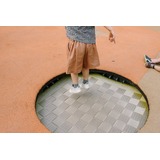How Australian Soil Types Affect In-Ground Trampoline Installation
Author: Jump Star Trampolines Date Posted:17 August 2025

Installing an in-ground trampoline can add a fun and practical element to any backyard. However, in Perth, understanding the specific soil types is key to ensuring a safe and successful installation. Different soils require different approaches, which can impact the overall stability and durability of your trampoline setup.
In Perth, the soil is a blend of sandy and clay types, each presenting its own challenges during trampoline installation. Knowing how the composition of soil can affect the process helps you take the right steps for a secure installation. Whether you’re planning to set up a new trampoline or want to ensure your existing one is safe, understanding the soil type in your area is essential for a lasting installation.
Understanding Perth's Soil Types
Perth's unique geographical layout contributes to its diverse soil types. Here's a look at the most common soils you'll encounter if you're looking to install an in-ground trampoline:
1. Sandy Soil: This type of soil is known for its loose structure and excellent drainage capabilities. While it can prevent water from accumulating, sandy soil may lack the compactness needed for stability. In this type of soil, extra effort must be made to firmly anchor the trampoline and secure the edges.
2. Clay Soil: Unlike sandy soil, clay retains water, making it prone to becoming soggy and heavy. It can cause issues with drainage, potentially leading to water accumulation under your trampoline, which can compromise its stability. Addressing drainage and soil movement is crucial when dealing with clay soil.
3. Loam Soil: As a balanced mix of sand, silt, and clay, loam provides a stable foundation for in-ground trampoline installation. Its water-holding capabilities and nutrient-rich composition can support a more straightforward installation process, yet it still requires certain steps to reinforce its stability.
Understanding these soil types helps when planning the trampoline's installation process. Each type demands a specific set of steps to ensure the safety and durability of your trampoline. By considering the distinct characteristics of Perth's soils, you can make informed choices that will enhance your trampoline's longevity and safety.
Preparation Steps Based on Soil Types
When it comes to preparing for your trampoline installation in Perth's diverse soil conditions, there are specific steps you should take based on the type of soil found in your backyard.
For sandy soil:
- Compact the ground effectively to create a firmer surface. Use a compactor or layer a few inches of compactible material to strengthen the base.
- Ensure that the edges of the trampoline are properly secured, possibly needing additional anchoring methods to keep everything in place over time.
For clay soil:
- Address drainage issues before installation. Consider installing a drainage system to prevent water from pooling.
- Use a gravel base to help with drainage and reduce water retention under the trampoline, which could lead to soil shifting.
For loam soil:
- Reinforce the stability further by checking the compaction, though loam naturally provides a good foundation.
- Add a barrier, such as landscaping fabric, to minimize soil erosion around the trampoline area.
These preparation steps are essential to ensure the safety and longevity of your in-ground trampoline in Perth.
Professional Tips for a Successful Installation
It's always beneficial to get professional advice when dealing with soil-related installation challenges. Here are some expert tips:
- Consult with local soil experts or trampoline installation professionals who understand the area’s specific soil conditions.
- Invest in high-quality materials for the trampoline structure. This might include corrosion-resistant metals that can withstand the moisture levels in your soil type.
- Regular maintenance is key. Check the trampoline's foundation periodically, paying special attention to shifts or any water accumulation that might impact its stability.
Getting expert help allows you to avoid common pitfalls and ensures your trampoline is both safe and secure.
Advantages of Proper Installation
A properly installed trampoline offers numerous benefits. Here's why getting it right matters:
- Safety: A stable trampoline setup minimizes the risk of accidents, which is particularly important for children using it.
- Durability: Correct installation prolongs the life of your trampoline as it can handle the soil's demands without degrading quickly.
- Enhanced Enjoyment: Knowing your trampoline is safely and securely installed gives peace of mind, letting you focus on the fun.
When your trampoline is installed with an understanding of the local soil, you ensure it remains a delightful and long-lasting feature in your garden.
Ensuring Your Trampoline is Ready for Fun in Perth
Perth's soil conditions can seem tricky, but with the right knowledge and preparation, it's easy to keep your backyard trampoline in top condition. Regularly revisit the points mentioned to ensure safety and maximise enjoyment.
Taking steps to cater to your specific soil type can make a huge difference. So, whether you're checking the drainage setup for clay soil or reinforcing the edges in sandy soil, being proactive ensures your trampoline remains the heart of family fun. Make sure all preparations are done properly and your setup is secure. Enjoy many carefree hours of bouncing without a hitch!
Looking to make the most of your backyard while ensuring safety and durability? Explore our range of options for an in-ground trampoline in Australia with Jump Star Trampolines. We provide quality solutions tailored for different soil conditions, ensuring that your space becomes a hub of fun and activity. Let us help you create a secure and enjoyable trampoline setup that blends seamlessly into your backyard landscape.






